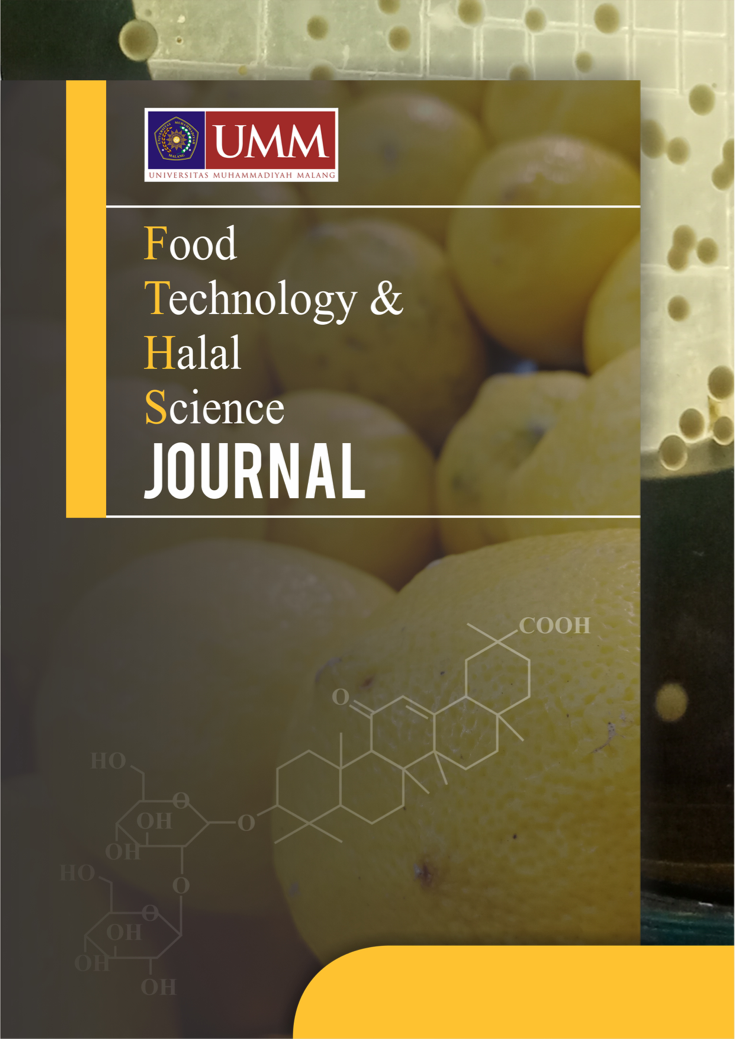The study of watermelon rind (Citrullus lanatus) and pinenapple fruit (Ananas comosus L.) proportion with caragenan addition on fruit leather physicochemical characteristics
DOI:
https://doi.org/10.22219/fths.v1i1.7552Keywords:
Pectin, watermelon rind, pineapple, carrageenan, fruit leatherAbstract
presentage of pectin is about 21.03% which suitable for food production such as fruit leather. Fruit leather is one of the snack food products from fruit pulp (puree) were dried in an oven or a dehydrator. Shortage of watermelon rind fruit leather is to produce flavor and color that is less interesting and has a less flexible texture. Therefore, in making fruit leather from watermelon rind is added substitution materials and stabilizers such as pineapple and carrageenan. This study aimed to determine the effect of the proportion of watermelon rind with pineapple and the addition of carrageenan concentration on the physicochemical and sensory characteristics of fruit leather. The study was conducted using a randomized complete block design (RCBD) factorial. The first factor with three levels, namely the proportion of watermelon rind and pineapple (90%:10%, 80%:20%, and 70%:30%). The second factor was carrageenan concentration (0,2%, 0,4%, and 0,6%). Treatment of the proportion of watermelon rind and pineapple had significant effect on water content, ash, vitamin C, hardness, sugar, lightness (L), yellowish (b+). Treatment of carrageenan concentration has significant effect on water content, ash, vitamin C, lightness (L). Fruit leather of watermelon rind that has best physicochemical characteristics was A1K1 treatment is the proportion of albedo rind and pineapple (90%: 10%) and carrageenan concentration 0.2%. organoleptic taste 3.10, aroma 2.70, color 3.00, and favor 3.03.Downloads
Download data is not yet available.
Downloads
Published
2019-01-13
How to Cite
Khusnul Khotimah, D. D. S. R. A. K. W. (2019). The study of watermelon rind (Citrullus lanatus) and pinenapple fruit (Ananas comosus L.) proportion with caragenan addition on fruit leather physicochemical characteristics. Food Technology and Halal Science Journal, 1(1), 71–80. https://doi.org/10.22219/fths.v1i1.7552
Issue
Section
Articles
License
Authors who publish with this journal agree to the following terms:
- Authors retain copyright and grant the journal right of first publication with the work simultaneously licensed under a Creative Commons Attribution License that allows others to share the work with an acknowledgement of the work's authorship and initial publication in this journal.
- Authors are able to enter into separate, additional contractual arrangements for the non-exclusive distribution of the journal's published version of the work (e.g., post it to an institutional repository or publish it in a book), with an acknowledgement of its initial publication in this journal.
- Authors are permitted and encouraged to post their work online (e.g., in institutional repositories or on their website) prior to and during the submission process, as it can lead to productive exchanges, as well as earlier and greater citation of published work (See The Effect of Open Access).










